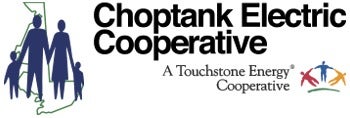When It Comes to Generator Safety, Don’t Wait!
Now is the time to ensure you are ready for future emergencies.
While a power outage can happen regardless of bad weather or season, it’s always a good time to perform the annual maintenance on your generator. Owners of standby generators should be running their generators regularly throughout the year, but portable generator owners may not be performing their tests regularly. Portable generators can be neglected in this regard as many owners only pull them out when faced with the threat of an outage. That makes today a great time to get generators ready for future use.
Proper planning goes hand in hand with proper maintenance. Generators that run on fossil fuels exhaust carbon monoxide fumes. Carbon Monoxide is known as the “silent killer.” It is a poisonous gas that is colorless and odorless.
The effects of carbon monoxide range from dizziness, headaches, and nausea, to unconsciousness and death. Due to this danger, a generator should never run indoors, not even in an attached garage. When using your generator, it must be located outside away from windows or vents that could draw the exhaust indoors. Proper planning for your generator includes selecting a safe location outside of your home to run your generator.
Another important reason for planning is to prevent tragedy, not just for your families, but also for lineworkers. Backfeeding the electricity from your generator to the grid energizes the electric distribution lines and jeopardizes the lives and safety of our lineworkers.
The electric transformer outside your home steps down the line voltage from the grid to feed your house. The transformer does not recognize the direction of the electric current. If your generator backfeeds to the grid, the transformer will step that voltage up.
It is possible to see 120 volts output from a generator stepped up to 7,200 volts on the electric lines.
This creates a dangerous situation for lineworkers attempting to repair an outage. The best way to take care of this is to make sure your generator transfer switch or interlock device is installed by a licensed electrician so that your generator does not backfeed into our electric lines.
Additionally, you should avoid connecting any appliances directly to the generator using an extension cord, which can cause everything from power drops to overheating.
Some members might have a standby generator that is permanently mounted and tied into their home’s electrical system. This type of generator should be installed by a qualified electrician with a disconnect switch that separates your home from the grid during its use.
Electric generators are useful appliances that provide us with off-the-grid electricity. They deliver energy to our homes in the event of an outage and can be real lifesavers. Knowing and addressing the threats of carbon monoxide poisoning and backfeeding electricity to the grid can help protect our family members and friends. Following these guidelines can ensure the safe use of your generator for years to come.
For more information about generators and their safety features, ask for Kris Amsel, our Key Accounts Specialist, at 1-877-892-0001.
